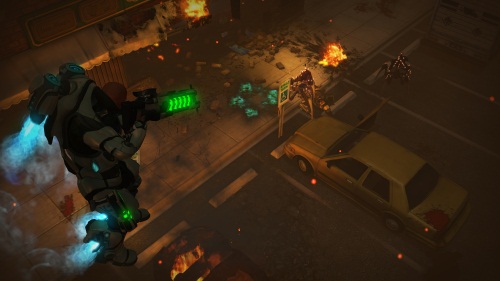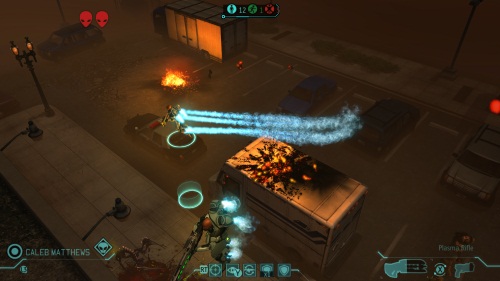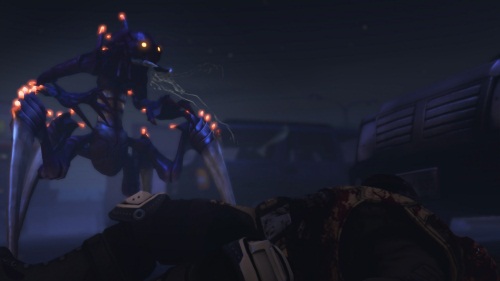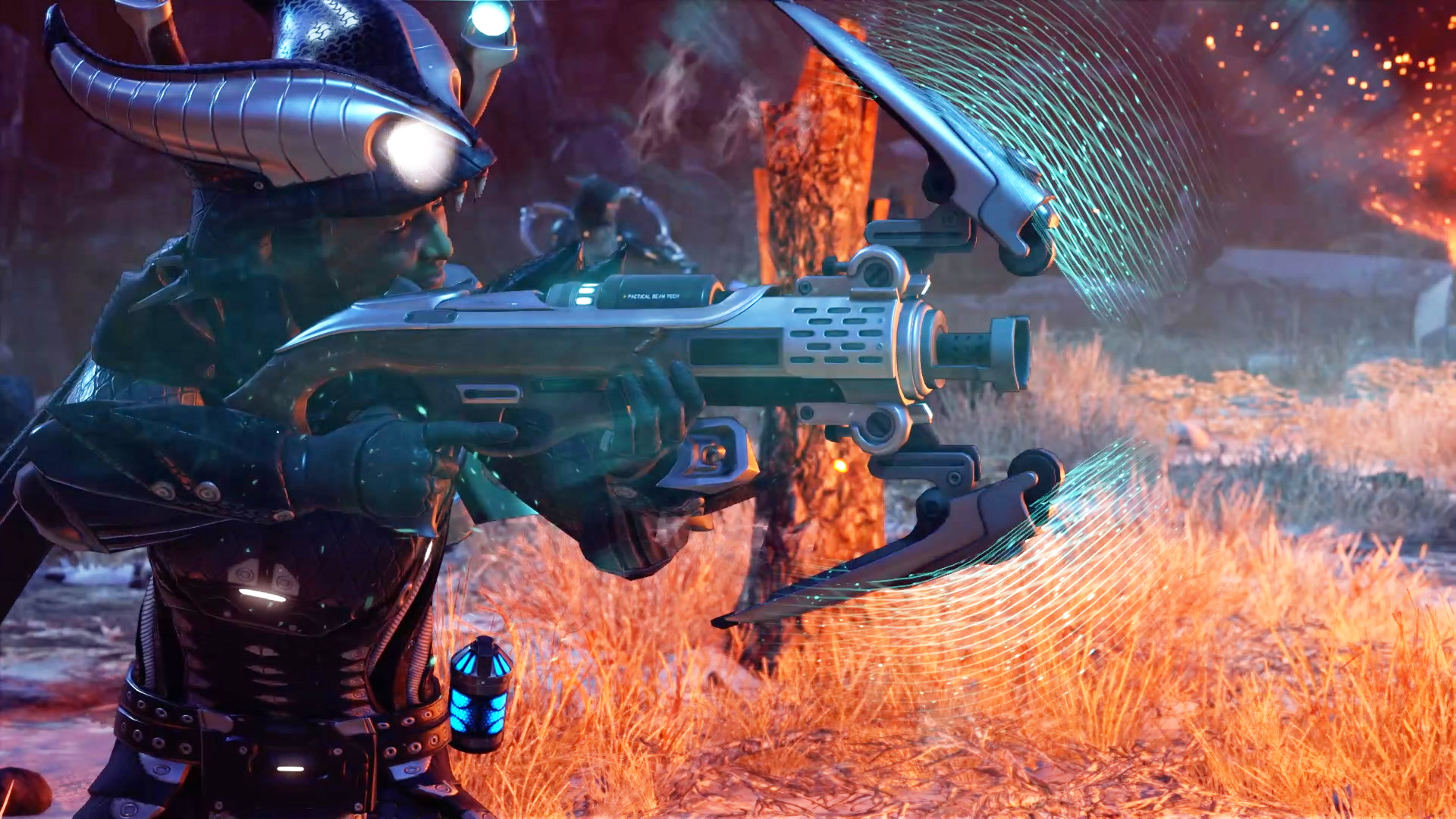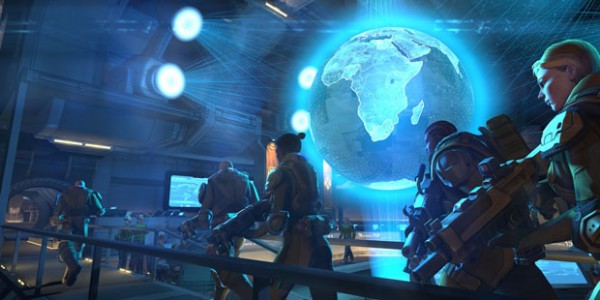
It’s been almost twenty years since the debut of the alien-battling XCOM series, and accompanying developer and publisher changes have also seen shake-ups in the basic gameplay of the series. The latest effort, in a joint venture between 2K Games and Firaxis Games, sees the series rebooted and going back firmly to its strategy roots. Much like the aliens of the series itself, Rocket Chainsaw was able to stage its own invasion to study the latest game, XCOM: Enemy Unknown. What you’re reading now is a report of our not-quite-classified findings.
One thing that we quickly noticed in our demo run was the change in presentation during gameplay. Rather than having a fixed camera from an overhead isometric perspective, Enemy Unknown frequently changes up angles for both presentation and gameplay effect. The overhead perspective is still the best for scoping out where aliens are hiding out, but the finer points of combat are accompanied with camera changes. This allows players to see different objects and barriers that may block your shot, as well as a rated percentage of how likely you are to score a successful hit. Once you do begin your attack, it will often be accompanied by a short, slo-motion cinematic which will show you whether your onslaught has struck home, missed completely, or been dodged by whatever extraterrestrial you were lining up against.
And there are indeed a variety of enemies – some that longtime fans of the series will recognise. In our sneak peek, we spotted the typical little green men, augmented with psychic powers, as well as some aliens who take on a more humanoid, but no less dangerous form. Aliens in the game attack in a variety of ways. Many have the benfit of their own ray guns with which to take out your own players from a distance, while there are also those who will prefer to be more physical, attacking from close-quarters. Others still will be able to poison your player after an attack. The types of weapons that your own squad members can carry will vary. All of them are equipped with machine guns and often standard grenades, which pack quite a whallop, but others still have more specialised firearms and abilities. One character we played as had the use of a rocket launcher, which was capable of blowing away a shack whic housed some aliens. Others still have different abilities to give a unique edge in battle, such as a jetpack to take out higher-up enemies and the power of invisibility to prevent aliens from spotting you.
The development and application of weapons and special abilites is controlled out of your base of operations, which the game will cut back to whenever you complete a mission. It’s here that the strategy element is a bit more pronounced. Not only will you be able to modify a soldier’s weapons and ranking, as described above, but there are broader aspects of the base that help to influence what happens in the game. You’re presented with a world map that gauges threat levels for each country. If you help a country out they will reward you with a boost in different skills, such as greater engineering expertise or scientists. Leave a country to its own devices and get attacked by aliens, however, and the threat level will rise. A rising threat level equates to countries in time being less willing to help you out and can result in panic in the streets. If threat levels rise too greatly, then the aliens have effectively pulled off a successful invasion, dooming humanity.
Of course, saving various continents from doom isn’t the only way you can acquire upgrades. While out in the field, you can collect the remains of aliens in order to develop different technologies and find out just what it is that makes them tick…or explode. Different tissue samples will yield different results, while a live alien will yield significantly more study. In fact, one of the missions we encountered was based around trying to capture an alien alive and take it to the lab for further study and possible communication.
Being on the ground and fighting out missions isn’t the only way to combat aliens. By using sattelites from the command centre, you can pick up on enemy craft before they have a chance to land in a country. The more satellites aimed at an area will equate to a greater chance of pre-emptively spotting alien craft. Once you’ve sighted a vessel, you can deploy your own craft and weaponry to take them out. In this way, you’re able to stop major attacks before they begin and prevent unnecessary deaths of squad members.
Of course, it will still be awhile yet before the public is able to go about their own alien-stopping efforts, with XCOM: Enemy Unknown set to invade this coming October. We’ll bring you more news on Enemy Unknown as it happens – unless we abducted by aliens before then.

